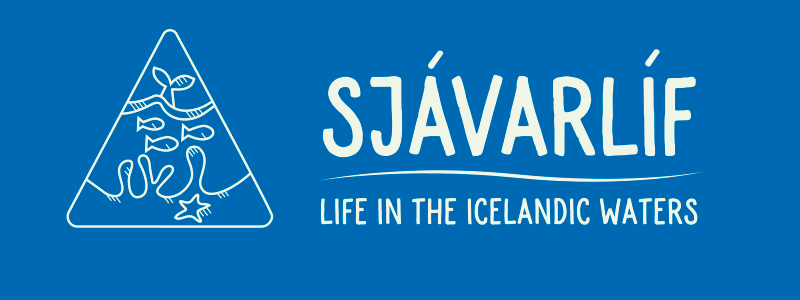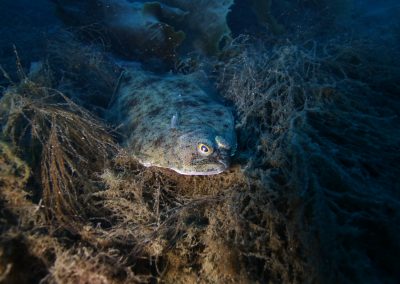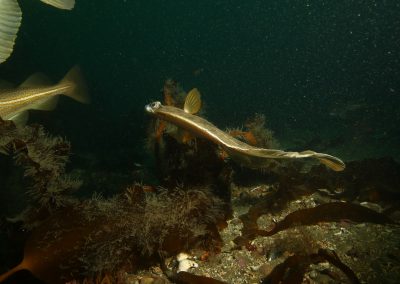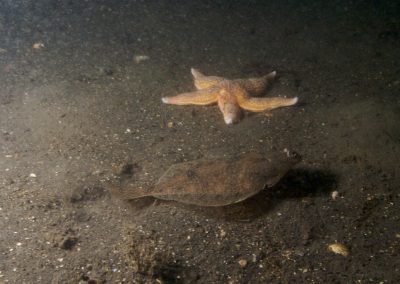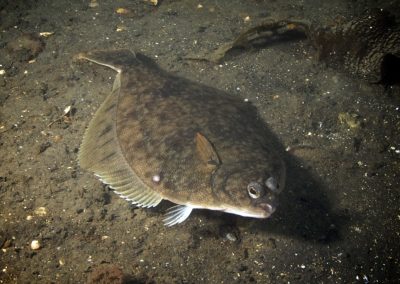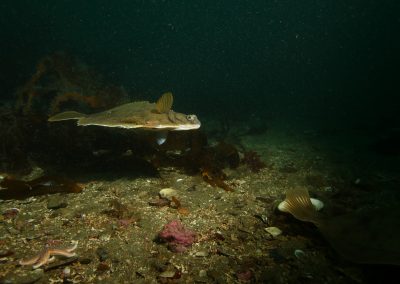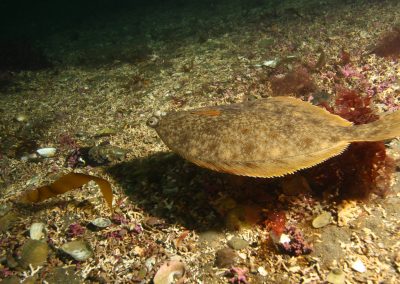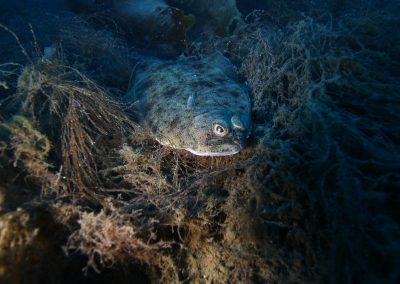Common dab
Limanda limanda
Dab is small compared to other flatfishes of commercial importance, usually between 20 and 35 cm in total length. The largest individual found in Icelandic waters was 49 cm, which is a world record.
Distribution
The dab is exclusively a shallow water fish and is common on sand or mud bottoms from zero to 40 m. It is very rare below 120 m.
It presumably does not migrate long distances but generally seeks deeper waters in winter.
Dab is only found in the eastern part of the North Atlantic, from the Barents Sea to the Bay of Biscay. In the North Sea, it is among the most common fish species.
Ecology
Growth of dab is fast during the first years but slows after reaching sexual maturity at the age of 2 to 3 years for males and 3 to 4 years for females. Females grow faster and reach greater age than males or up to 14 years.
The diet of the dab is variable, it is an opportunistic feeder and can handle large food items. Various benthic invertebrates are common in the diet, as are sandeels and capelin. Discarded intestines from fishing boats are commonly found in dab stomachs.
Fisheries
Until 1984 dab was not caught in large numbers in Iceland, only a few hundred tonnes were reported before that, mostly caught by English boats. However, catches by Icelandic boats increased substantially after quotas were set on other more valuable species.
Catch amount reached a peak at 8,000 tonnes in the late 1990s but has declined considerably since then.
HÞV
